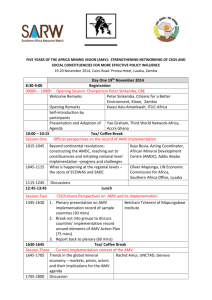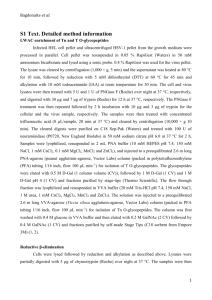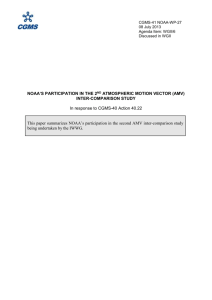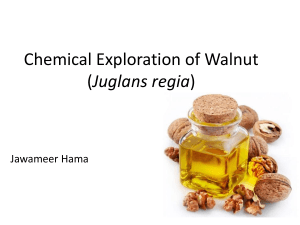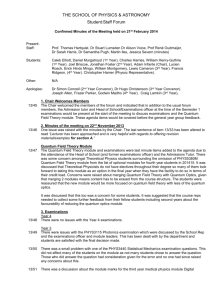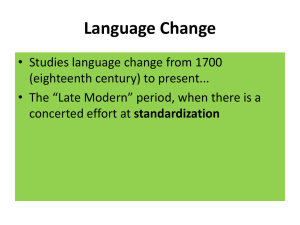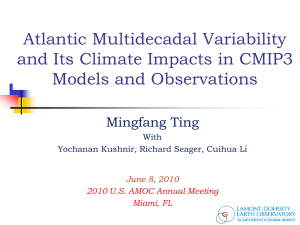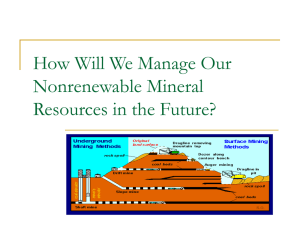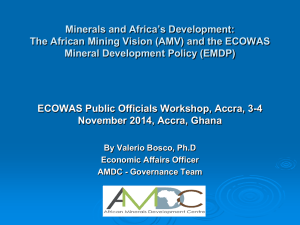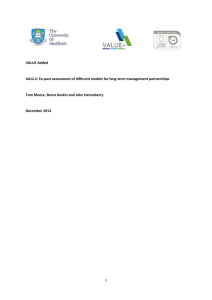5 Years of the Africa Mining Vision (AMV)
advertisement
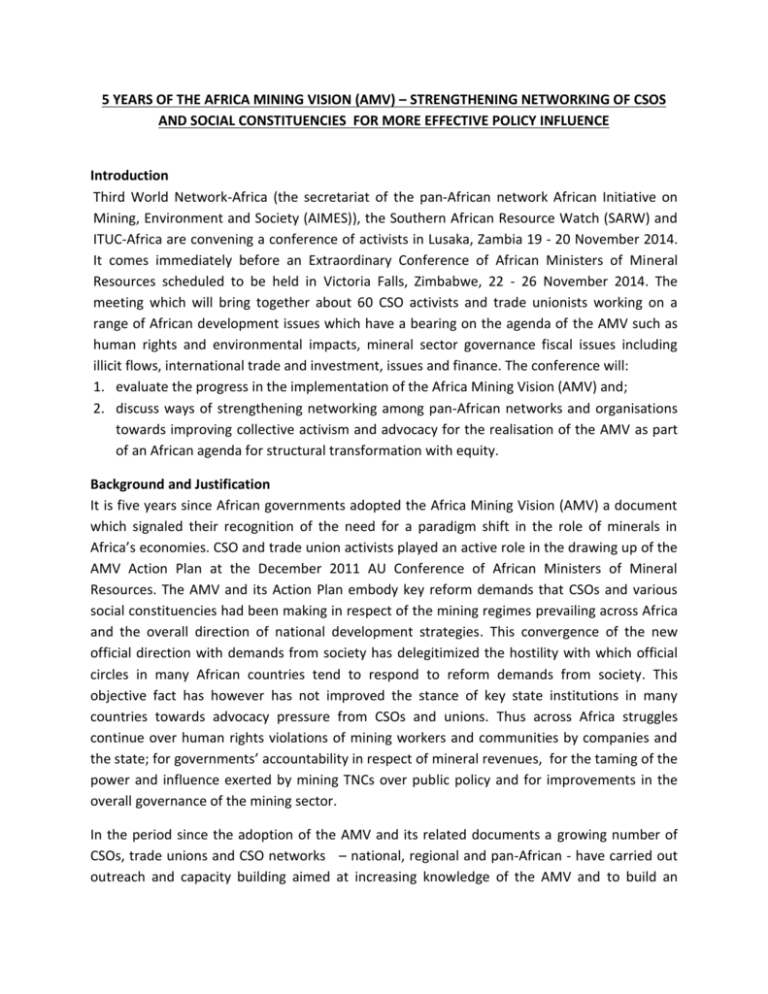
5 YEARS OF THE AFRICA MINING VISION (AMV) – STRENGTHENING NETWORKING OF CSOS AND SOCIAL CONSTITUENCIES FOR MORE EFFECTIVE POLICY INFLUENCE Introduction Third World Network-Africa (the secretariat of the pan-African network African Initiative on Mining, Environment and Society (AIMES)), the Southern African Resource Watch (SARW) and ITUC-Africa are convening a conference of activists in Lusaka, Zambia 19 - 20 November 2014. It comes immediately before an Extraordinary Conference of African Ministers of Mineral Resources scheduled to be held in Victoria Falls, Zimbabwe, 22 - 26 November 2014. The meeting which will bring together about 60 CSO activists and trade unionists working on a range of African development issues which have a bearing on the agenda of the AMV such as human rights and environmental impacts, mineral sector governance fiscal issues including illicit flows, international trade and investment, issues and finance. The conference will: 1. evaluate the progress in the implementation of the Africa Mining Vision (AMV) and; 2. discuss ways of strengthening networking among pan-African networks and organisations towards improving collective activism and advocacy for the realisation of the AMV as part of an African agenda for structural transformation with equity. Background and Justification It is five years since African governments adopted the Africa Mining Vision (AMV) a document which signaled their recognition of the need for a paradigm shift in the role of minerals in Africa’s economies. CSO and trade union activists played an active role in the drawing up of the AMV Action Plan at the December 2011 AU Conference of African Ministers of Mineral Resources. The AMV and its Action Plan embody key reform demands that CSOs and various social constituencies had been making in respect of the mining regimes prevailing across Africa and the overall direction of national development strategies. This convergence of the new official direction with demands from society has delegitimized the hostility with which official circles in many African countries tend to respond to reform demands from society. This objective fact has however has not improved the stance of key state institutions in many countries towards advocacy pressure from CSOs and unions. Thus across Africa struggles continue over human rights violations of mining workers and communities by companies and the state; for governments’ accountability in respect of mineral revenues, for the taming of the power and influence exerted by mining TNCs over public policy and for improvements in the overall governance of the mining sector. In the period since the adoption of the AMV and its related documents a growing number of CSOs, trade unions and CSO networks – national, regional and pan-African - have carried out outreach and capacity building aimed at increasing knowledge of the AMV and to build an advocacy constituency for implementation. The AMV has been an important part of the work of SARW and AIMES (and its members) since 2008 and has also entered the work streams of IANRA and Publish What You Pay. ITUC-Africa has also organized workshops on the AMV as has the global union Industriall. The AMV has been on the agenda of the Alternative Mining Indaba in Cape Town. A critical aim of the AMV work by AIMES as well as SARW has been to build alliances of networks and organisations with diverse thematic focus and social bases towards common advocacy purpose for moving the AMV from official aspirations to effective policies for change. Thus over the past few years there have been a number of meetings on the AMV, convened by AIMES which brought together a mix of trade unionists, activists from networks with different thematic focus such as trade, gender and development, human rights, illicit flows, financing development to discuss how they could deepen advocacy collaboration for the realisation of the AMV. Some of these organisations have also organized policy dialogue encounters involving public officials, MPs CSOs, unions and journalists. These initiatives and activities within society have taken place alongside the evolution of official steps towards the implementation of the AMV at continental, regional and national levels. At the continental level governments have agreed on the creation of the African Mineral Development Centre (AMDC) as the strategic focal point for the realisation of the Vision. number of regions e.g. ECOWAS have taken step to develop regional versions of the AMV and its Action Plan while the AMV has inspired the revision and initiation of national mining policies in a number of countries. The AMDC has been a partner/advisor in some of these national processes. These developments notwithstanding, it is fair to say that there is not yet a single African country where mobilisation and organisation around the reform agenda of the AMV is an overtly dominant political influence. Even the insurgent mood for limited reforms generated among the political elite of mining countries by the discovery that the benefits of the mineral price boom, that preceded the global financial and economic crisis, were inuring primarily to the benefit of mining TNCs has tapered off. This development is the product, corporate resistance to pressure for changes to the fiscal regimes and revision of contracts aided by governments treating the political-economic contest with the TNCs as narrow bureaucraticlegal exchanges to be kept secret from society and its pressures. The relative decline of mineral prices in recent years and the resultant anxieties about mineral revenues have furthermore weakened the resolve of many governments. These developments also highlight the weak influence of campaigning groups in this area of policy. Over the past couple of years some leading mineral exporting countries, notably Ghana and Zambia, have descended into economic crisis, partly as a result of decline in the prices of copper and gold. This development has both affected the reform drive in these countries and underlined the importance of implementing the AMV reform agenda if African countries are in the long term to escape the ups and downs of primary commodity export dependence. On the wider African policy landscape a number of important developments, with implications for the AMV’s agenda, are unfolding. In recent months Africa’s regions, starting with ECOWAS, have started caving in to EU pressure to sign the Economic Partnership Agreements (EPAs), setting them on path which could have constrict space for the realisation of the AMV’s agenda. There is an acceleration of discussions and plans for problematic Public Private Partnerships (PPP) in infrastructures which are being justified in terms of helping to improve the exploitation of Africa’s mineral resources. PPPs are looming large in the financing discussions in the post 2015 agenda. In East Africa, amidst the growing discoveries of mineral resources, especially oil and gas, the USA has initiated discussions with the East African Community (EAC) for a regional BIT. On the other hand South Africa is moving in the other direction by rescinding its BITs as they fall due for re-negotiation and is also part of efforts for a more favourable SADC BIT. Illicit Flows are growing in importance as part of the African policy advocacy landscape with the extractive sector widely agreed to be of key importance. It is important that these issues with a direct or contextual importance for the AMV form part of analysis and planning for advocacy around the AMV and hence the importance of reaching beyond a “narrow’ mining constituency for participation in the scheduled meeting.
